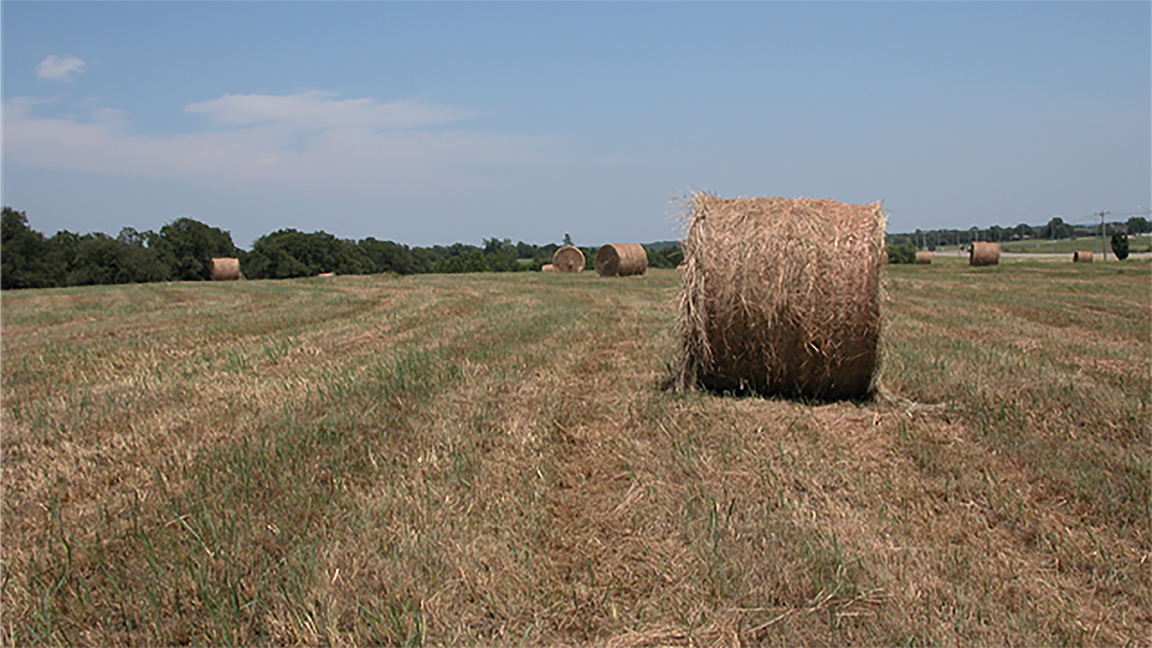Should Cattlemen Buy a Surplus of Hay for Next Year?
Nutrient content should be the No. 1 consideration when purchasing hay.
December 17, 2024

This year, due to good spring moisture, hay harvest was often delayed. This increased plant maturity and lowered nutrient content. [NDSU photo]
by Dominic Erickson, North Dakota State University
Most of North Dakota received good moisture during the growing season, allowing production of an ample hay supply. As a result, the hay market has slowed and prices have dropped, indicating a buyer’s market. This has some livestock growers speculating whether they should purchase hay now to create a carryover surplus as insurance for if forage supplies are tight in 2025.
Considering moisture conditions across the state since July have been low and spring moisture conditions are unknown, North Dakota State University (NDSU) Extension forage crops specialist James Rogers says they should buy, provided some caveats be met.
First, Rogers advises producers to determine whether the price is good by looking at their own cost per bale of production. Per-bale production costs are determined by yield, input costs, machinery and labor. The higher the yield, the lower the per-bale cost.
It is difficult to produce a typical 1,500-pound (lb.) bale of hay at a cost less than $40 per bale. Depending on crop input costs and yield, per-bale cost can go over $100 per bale.
If the cost of a bale is equal to or less than the cost of production, does that imply it’s a good buy? Maybe, says Rogers, but bale weights and dry-matter (DM) content are other key factors. It is best to purchase hay on the basis of dry matter per ton. Assuming 100% dry matter, a 1,200-lb. bale at $40 per bale would be $0.033 per lb. ($66 per ton). A 1,500-lb. bale at $40 per bale is $0.027 per lb. ($54 per ton).
Ask for the forage test
The nutrient content of the hay should be the No. 1 consideration when purchasing hay.
“Ask for forage test results prior to purchasing hay,” says Rogers. “Then you can compare one hay to another based on price per pound of crude protein (CP) and energy content reported as total digestible nutrients (TDN).”
This year, due to good spring moisture, hay harvest was often delayed, increasing plant maturity and lowering nutrient content.
Reviewing the results from several hay forage tests submitted from the 2024 crop, Rogers sees that a portion of the 2024 hay crop has CP levels that dipped down into the 5%-6% level and TDN level below 55%. Hay of this type requires supplementation of both CP and TDN, which is a cost that should be added back to the cost of the hay.
On the other hand, forage test results also reveal there is plenty of hay from the 2024 crop that is high in nutrient content and therefore requires no supplementation depending on the class of livestock it will be fed to. There is no other way to know this without having it tested.
Consider storage
The final consideration is storage and feeding waste. If hay is purchased now, what condition will it be in six months to a year from now when it is fed? Round bale DM loss increases linearly with spoilage depth. A round bale that is 6 feet (ft.) in diameter with a 2-inch (in.) spoilage loss around the bale has lost 10% DM. At 4 in., this increases to 20% and at 6 in., 30%.
Loss due to spoilage is often unaccounted for. If a 1,500-lb. bale priced at $0.027 per lb. loses 20%, or 300 lb., the financial loss is $8.10 a bale. Round bales wick moisture from the ground, leading to DM loss when stored outside. This is simply unavoidable.
The longer outside storage goes on, the higher the loss, which can reach 50% levels at a year or longer. For long-term storage considerations, bales should have a good round shape and are dense with a good wrapping. Storage areas should be well-drained with minimal ground contact if possible. The ultimate long-term storage would be in a barn. If bales are maintained in good condition during storage, little change in nutrient content will occur.
Is it a good idea to purchase hay during a down hay market? Rogers says it very well can be if the following is true:
- A comparison can be made between on-farm cost of hay production and purchase hay cost.
- The bale weights and DM are known and can be purchased by the ton rather than by the bale.
- It has a forage test so that it can be purchased based on cost per pound of CP and energy content.
- The forage test shows no anti-quality issues such as nitrates or heat-bound protein.
- It can be stored long-term to minimize storage loss. It is always a good idea to have a surplus on hand, as long as it is taken care of during storage.
- Feeding losses can be minimized.
Editor’s note: Dominic Erickson is an ag communications specialist at North Dakota State University. [Lead photo by NDSU.]
Angus Beef Bulletin EXTRA, Vol. 16, No. 12-B
Topics: Feedstuffs , Management , Pasture and Forage
Publication: Angus Beef Bulletin


